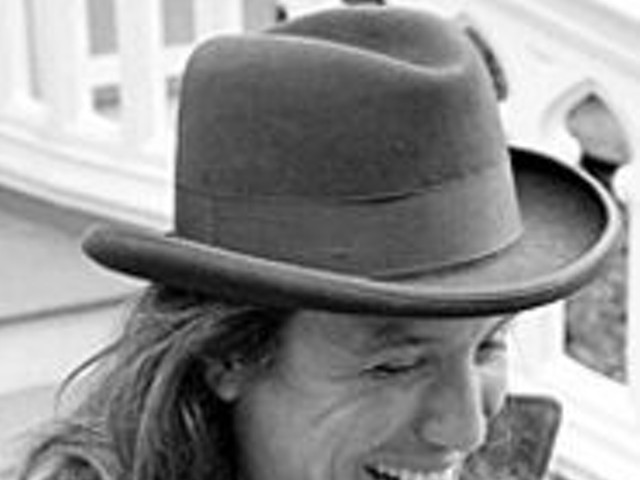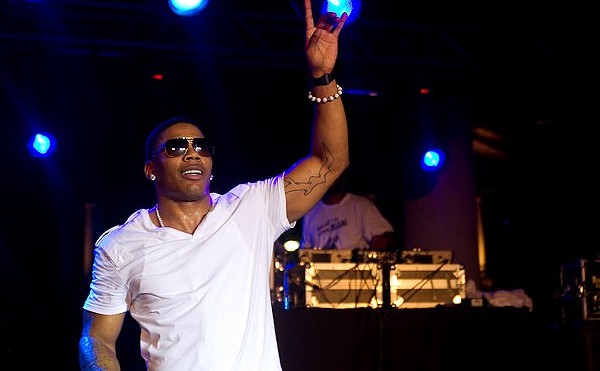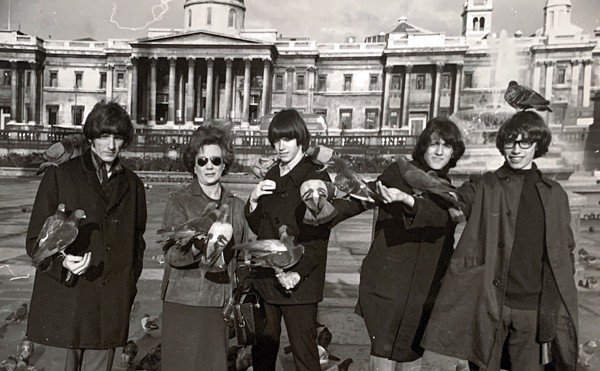Not that the band didn't possess considerable charm the first time around. Forster and McLennan formed the Go-Betweens in 1978, but it wasn't until 1985 that they landed on American shores. The band's first three albums -- 1981's Send Me a Lullaby, 1983's Before Hollywood and 1984's Spring Hill Fair -- were not released in the United States until more than a decade after they appeared elsewhere, and a 1985 distillation of Before Hollywood and Spring Hill Fair dubbed Metal and Shells was the band's first U.S. release.
What U.S. listeners missed in the first few records was the Go-Betweens' growing pains. The band's early records borrowed liberally from Bob Dylan, the Beatles and the wired Bowery rock of Television and early Talking Heads but filtered those anxious influences through wry wit and reflective melancholy. By the time the Go-Betweens recorded Spring Hill Fair, however, Forster and McLennan were making lush and melodic music that owed little to anyone else -- and could spook or sparkle according to the band's mood.
By the time U.S. audiences finally got a full-length taste of the Go-Betweens' music -- 1986's Liberty Belle and the Black Diamond Express and 1987's Tallulah -- the group had blossomed into one of rock's most tuneful and erudite bands. Critical hosannas never translated into sales, however, and even the release of the band's most consistent and commercial record (1989's 16 Lovers Lane) couldn't prevent a bittersweet breakup in 1990.
Hindsight being 20/20, the band members now see the pursuit of that elusive hit single with a more jaundiced eye. Interviewed by e-mail, Forster sums up that period with one word: "madness." He adds that the band's pop-star era was a time of "trying to reconcile craft and commerce, (and) failing as you can with that. It was a blur -- some very good music, some so-so. We never stood a chance in the USA. It was fun, though. And had to stop."
Robert Vickers, who played bass with the Go-Betweens from Spring Hill Fair through Tallulah, argues that "at the time, we were definitely trying to make pop records that would appeal to a lot of people. We even agreed to use that scourge of the time, the click track, on Spring Hill Fair."
The Go-Betweens' quest for a hit single became an obsession of sorts. "We were also very aware of needing a single to sell an album," Vickers continues. "We were all fans of singles growing up in the early '70s, so it was very natural to us that you had to have a radio-friendly single on an album. We did not approach the rest of the album as filler, [but] we felt it was possible to make an album that had a quality radio single on it without sacrificing the rest of the record."
That quest extended even to approaching the songs deemed to be "singles" differently, says Vickers. "On Spring Hill Fair," he recalls, "we recorded the 'Bachelor Kisses' single separately from the album. On Tallulah, we recorded 'Right Here' and 'Cut it Out' -- perhaps less successfully -- in a different studio with a different producer."
McLennan and Forster spent a decade making records apart, but the Go-Betweens' posthumous stock kept rising. Over that ten-year span, American fans of the band drowned in a flood of long-overdue re-releases and compilations -- including not one but two greatest-hits packages, 1990's The Go-Betweens 1978-1990 and 1999's Bellavista Terrace. There were also remasterings and repackagings of the band's five studio albums in 1996 and in 2002, the latter series kicked off by the release of "lost" 1978 and 1979 recordings of the band.
Thus latecomers were warmly welcomed and longtime fans at last could discern an arc to the band's career -- a smoothing out of rough edges and acceleration of the band's emotional intensity and maturity. The dialectics between Forster's intellect-driven folk and rock and McLennan's shimmering pop also sharpened in hindsight.
Eventually, Forster and McLennan took note of the revival of the band's fortunes and decided that resistance was futile. But unlike the dozens of old-school bands that re-form to cash in, the duo began working together again with a fresh take on both their music and each other. "The main benefit of the hiatus was that we learned to live again," McLennan says in response to e-mailed questions. The summing-up of the band's previous history in the series of re-releases, McLennan adds, "presents you with the gift of a blank drawing book."
Filling that blank drawing book are two collections of songs that stand happily with the best of their previous work. Recorded in Portland with members of Sleater-Kinney on board, Rachel Worth had a lo-fi quality that harked back to the band's first two records without relinquishing the band's hard-won maturity. McLennan's melody once again found muscle ("The Clock") and Forster's new songs ("German Farmhouse," "He Lives My Life") crackled and glowed by turns.
More critical raves have greeted Bright Yellow, Bright Orange, in part because the Go-Betweens' new record restores the sparkle and sheen of their most popular back-catalog work. Though its lyrics make it among the most melancholy of the band's records, Bright Yellow, Bright Orange's ebullience and clarity draw the listener back to the band's more pop-centric efforts.
That theme of looking back -- in anger, sorrow and regret -- is one of the dominant motifs on Bright Yellow, Bright Orange. Asked whether the deluge of drops on the cover represents raindrops or teardrops, Forster suggests that it's both. "Grant is the melancholy one at the moment," Forster says. "I find the album sound and title and the enjoyment of making it quite 'up.'"
Yet the reflective melancholia of Bright Yellow, Bright Orange starts right up front with "Caroline and I," Forster's aching nod to unrequited love and early Neil Diamond records. "There is always a bit of early Neil Diamond with everything that I do," Forster quips. Yet Forster is right in pointing to McLennan's new songs as the most brooding tunes on Bright Yellow, Bright Orange. A litany of Medusas and snakes and staleness undercuts the angelic harmonies and spry melody of "Poison in the Walls." The cramped anguish of small-town oddity provides the backdrop for "Mrs. Morgan." On "Old Mexico," McLennan croons to a doomed friend that "you were so excited/But you weren't invited."
Yet McLennan's melancholic words are set consistently to melodies and harmonies that glimmer with lightness and delicacy. Rarely has such stark alienation found such a beautiful setting. When asked the same question about the album cover's subject, McLennan replies playfully, "What a lovely thought. Melancholy running off the roof in gushing streams toward the river, or a trickle of salt over skin. Beware of tropical shadows, though -- they are lagoons of forgetting."
Forster's other songs on Bright Yellow, Bright Orange are equally playful, but their whimsy is shot through with a bleak sardonic edge. The slow shuffle of "Something for Myself" is a masterpiece of elegiac self-absorption in which he wisecracks: "Told not to pick at society's glue/I think I'll sniff it/That's what I'll do/For myself." The rambling "Too Much of One Thing" possesses a whimsy that the Go-Betweens -- past and present -- have often studiously avoided. "You might think you see purpose," Forster sneers wickedly, "but what you're seeing is a band."
The stark contrasts between Bright Yellow, Bright Orange and Rachel Worth already have Go-Betweens aficionados battling over which is better -- and many of the first reviews of the new record have dismissed the lo-fi vibe of its immediate predecessor. "I can imagine some 'revisionism' concerning Rachel Worth," Forster admits. "This is an ongoing process with all of our records -- in and out of favor with the cycles of taste and current grooviness.... Rachel Worth is a record that has gone up in my mind, not down."
Yet for all their stylistic differences, what both of the Go-Betweens "phase two" records share is a sense of relaxation and ease. Forster and McLennan are making music for its' own sake now -- and it shows. As Vickers notes, "I doubt if Robert and Grant would even consider recording a single separately now. The concept of the single is much less important now to bands who are indie or underground or whatever you want to call them. I think making records in the '80s, we were very influenced by the '60s, when the best bands were also, in the most part, commercially successful. It still seemed possible at the time. I don't think anyone would make that mistake now."
Today's Go-Betweens aren't making that mistake. In fact, that realization is why they're making music once again. "Go your own road, although that is a very hard thing to do," writes Forster when he's asked whether he has advice for others who want to make music, "and stay on herb tea."





